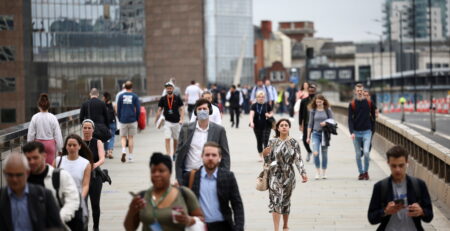UK. Coronavirus: Why the pension triple lock is back in the spotlight
At present, the state pension increases each year in line with the rising cost of living seen in the CPI measure of inflation, increasing average wages, or 2.5%, whichever of those three is highest.
This is known as the triple lock, and it is a Conservative manifesto pledge for the five years of this Parliament.
However, the technical aspects of state-paid wages during the coronavirus outbreak could lead to a big rise in the state pension if the government sticks to the current system.
How does the triple lock work?
Near the end of each year, the government sets the level of state pension to be paid from the following April.
The full, new state pension has amounted to £175.20 a week since April.
Most pensioners actually get the older basic state pension of £134.25 per week. They may also get a Pension Credit top-up.
Both the old and new state pension went up by 3.9% this year.
That was in line with the rise in average earnings (taken from official data from the previous May to July), which was higher than the other two elements of the triple lock, inflation (in September) and 2.5%.
Why is the triple lock a regular source of debate?
The triple lock has set the state pension level for each of the last 10 years.
The guarantee was introduced by the Conservative-Liberal Democrat coalition to ensure pensioners did not see any rise in their state pension being overtaken by the rising cost of living, nor that the working population would be see a much bigger income rise than them each year.
Read more @BBC











